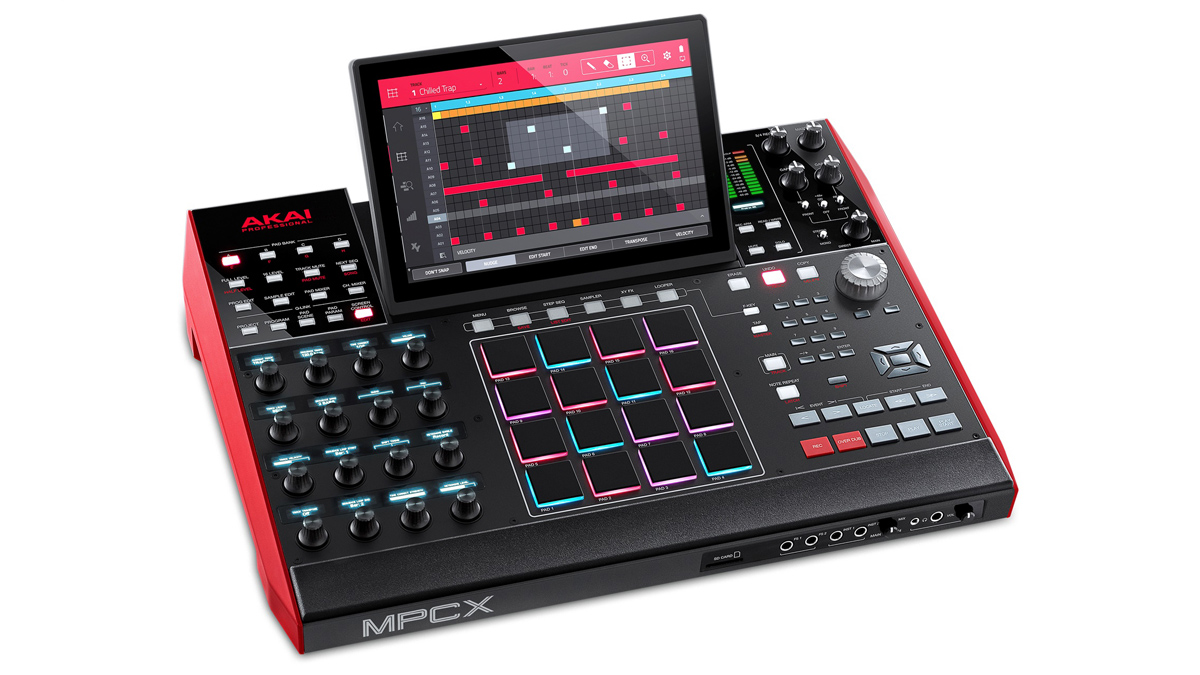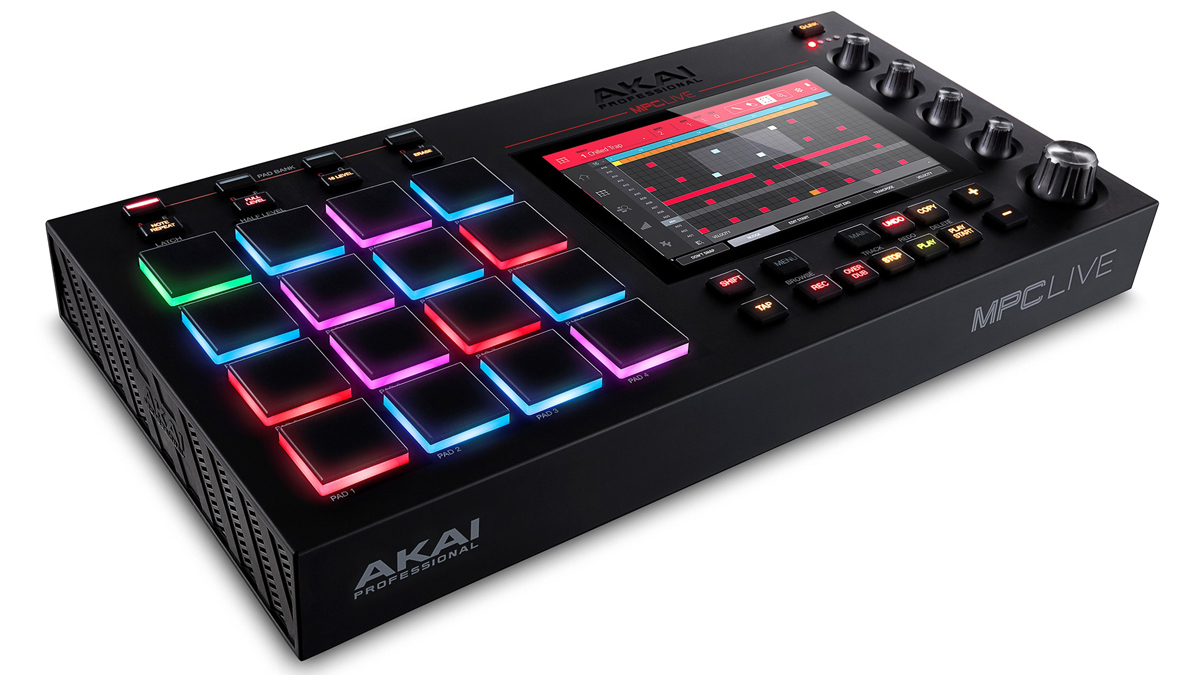NAMM 2017: Akai Pro's new MPC X and MPC Live take pad-based production back to its standalone roots
Both units can operate with or without a computer

Akai Pro MPC X

Akai Pro MPC Live
NAMM 2017: The future of Akai's MPC line has been the subject of much debate. The classic MPCs were standalone music production units, but more recent models have been hardware/software hybrids in the vein of Native Instruments' Maschine. What this means, of course, is that they can't be used without a computer, but things are about to change with the announcement of two new MPCs: the MPC X and MPC Live.
While neither of these machines is the Windows-based MPC that was prototyped a few years ago, both models are equipped with their own processors and can work either standalone or as controllers for their companion software. In fact, the flagship MPC X has a multicore processor that's tuned to get the best out of the MPC Software 2.0 that runs on it (this can also operate as a plugin or standalone on your PC/Mac), and comes with a 10.1-inch multitouch screen and 16 velocity- and pressure-sensitive RGB pads. There are also dedicated menu buttons, a large master encoder knob and 16 touch-sensitive 360 degree assignable pots (Q-Links) with adaptive OLED displays.

The theory is that the benefits of a touch-based workflow have been married to "full-featured production functionality," and that the MPC X could become the centrepiece of your studio. To this end, there are multiple connectivity options: a 2-in/4-out MIDI interface for hooking up synths, drum machines and other gear, comprehensive audio I/O and even eight CV/Gate outputs to accommodate your modular setup.
"The most powerful MPC"
"In creating the concept for the MPC X we wanted to preserve the classic MPC feel and workflow that people love," said Dan Gill, Product Manager for Akai Professional. "But we turned the idea on its head and incorporated the best of what a modern touchscreen interface can offer. What we have now is the most powerful MPC production experience ever."
The MPC X will go on sale for £1450 in the first quarter of 2017, but if you're looking for something a little more compact and affordable, consider the battery-powerable MPC Live. This one comes with a 7-inch multitouch screen, 16 velocity- and pressure-sensitive pads, four touch-capacitive Q-Link controls and a large, clickable master encoder knob. Again, there's multicore processing, as well as 2GB of RAM and 16GB of onboard storage (this can be expanded).

There's not quite so much connectivity here, but you still get a 2-in/2-out MIDI interface, two selectable audio inputs (RCA and balanced 1⁄4-inch jack), and six configurable 1⁄4-inch jack outputs. Like the MPC X, the MPC Live runs MPC Software 2.0, and it'll be available for £800 in the first quarter of 2017.
We'll be testing both of the new MPCs as soon as possible. Their standalone operation certainly gives them a USP in comparison to the likes of Maschine, but it remains to be seen how much of a killer feature this will be in an era when so many of us are so comfortable with having a computer at the heart of our setup. It's certainly a bold move on Akai's part, though, and could put the company right back in the pad-based production game.
Get the MusicRadar Newsletter
Want all the hottest music and gear news, reviews, deals, features and more, direct to your inbox? Sign up here.
Find out more on the Akai Pro website.
Akai Pro MPC X features
- Also acts as a control surface for MPC 2.0 Software, compatible with Mac & PC
- 16 Touch-capacitive Q-Links controls with OLED displays
- 66 buttons for direct, hardware access to all aspects of MPC Software 2.0
- Standalone MPC - no computer required - natively powered by MPC Software 2.0
- 10.1" full-colour multi-touch display
- 4 selectable inputs: 2 XLR / 1⁄4" combo jacks with switchable phantom power, 2 instrument level; 1⁄4" jacks, turntable RCA input with ground peg
- 8 outputs: balanced 1⁄4" jack
- Dual 1⁄4" and 1/8" headphone outputs
- 2 full-size MIDI inputs, 4 full-size MIDI Outputs
- 8 configurable CV/Gate outputs enabling the analogue control of modular gear, such as classic synths
- 16GB of on-board storage (over 10GB of premium sound content included from leading sound designers including CR2, TOOLROOM, Loopmasters, Capsun Pro Audio, and more
- User-expandable 2.5" SATA drive connector (SSD or HDD)
Akai MPC Live features
- Also acts as a control surface for MPC 2.0 software, compatible with Mac & PC
- Internal, rechargeable lithium-ion battery
- Selectable inputs: Turntable (RCA) with ground peg and stereo balanced 1⁄4-inch jack
- 6 configurable 1⁄4" balanced jack outputs
- 1/8" headphone output
- Standalone MPC - no computer required - natively powered by MPC Software 2.0
- 7-inch full-colour multi-touch display
- 2 pairs of full-size MIDI inputs and outputs
- 16GB of on-board storage (over 10GB of premium sound content included from leading sound designers including CR2, TOOLROOM, Loopmasters, Capsun Pro Audio, and more)
- User-expandable 2.5" SATA drive connector (SSD or HDD)
- 2 USB-A 3.0 slots for thumb drives or MIDI controllers
- SD Card slot for loading samples and projects

I’m the Deputy Editor of MusicRadar, having worked on the site since its launch in 2007. I previously spent eight years working on our sister magazine, Computer Music. I’ve been playing the piano, gigging in bands and failing to finish tracks at home for more than 30 years, 24 of which I’ve also spent writing about music and the ever-changing technology used to make it.









